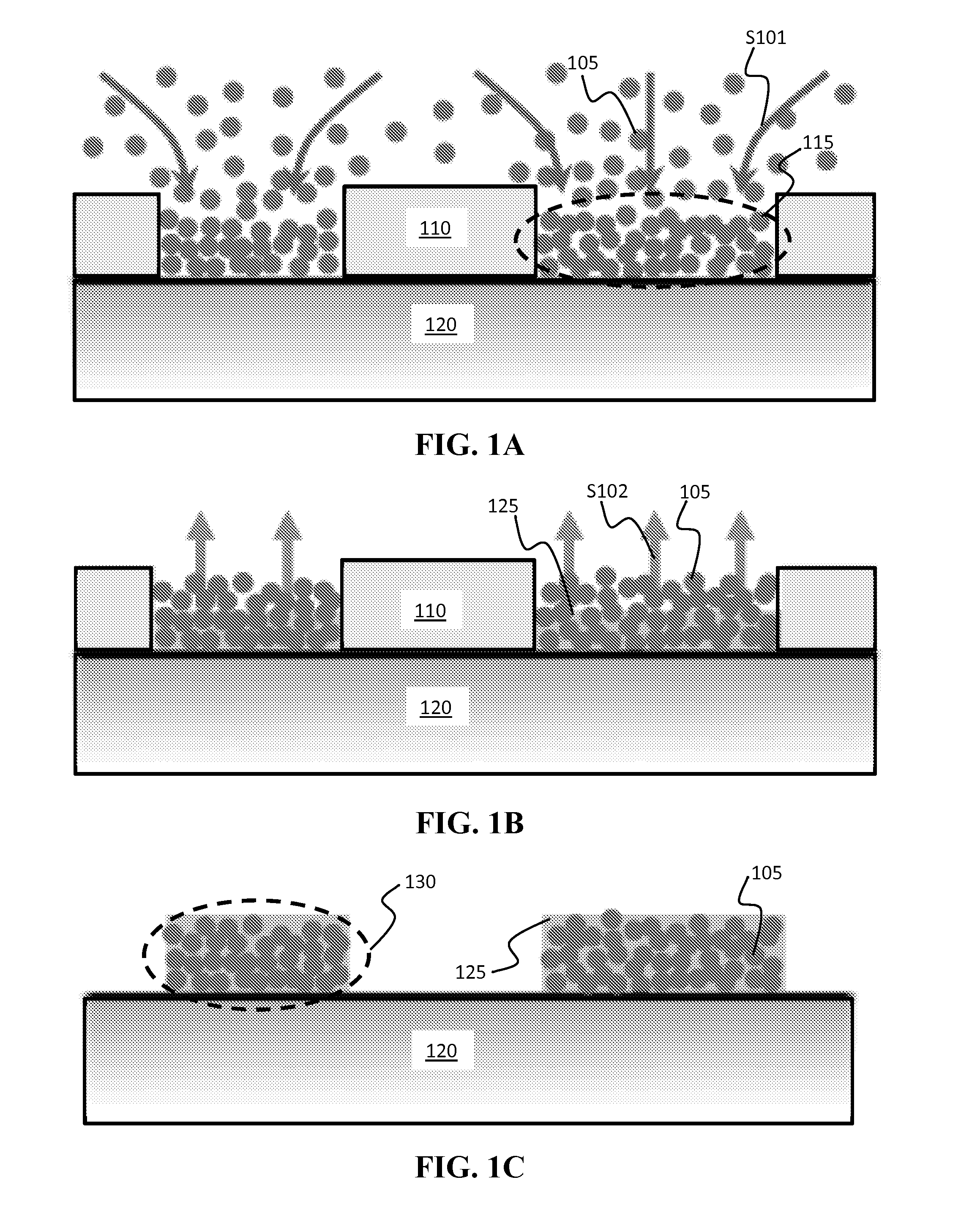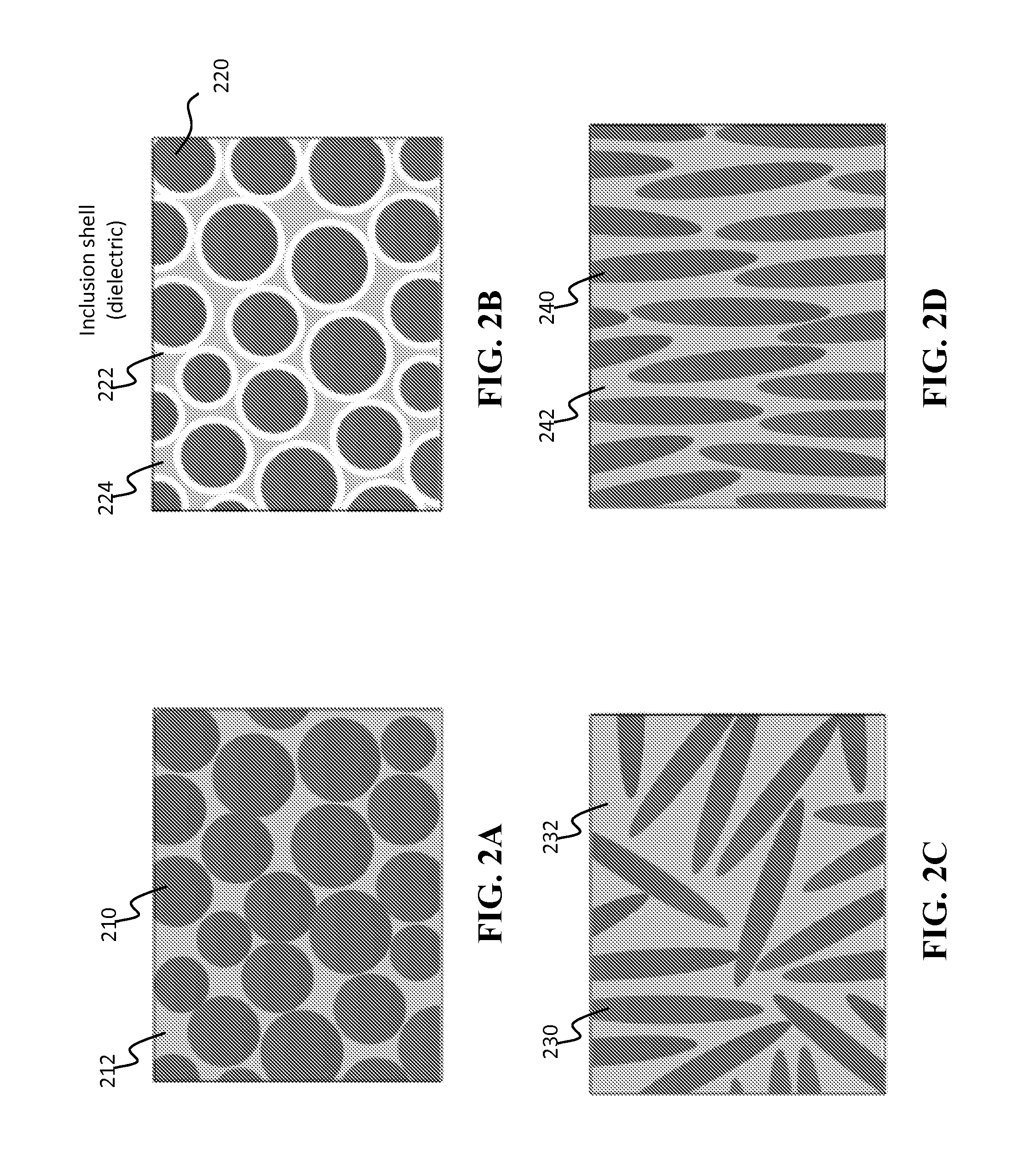Nanocomposite magnetic materials for magnetic devices and systems
a magnetic material and nano-composite technology, applied in the direction of magnetic materials, magnetic bodies, inductances, etc., can solve the problems of structural dimensions falling in a “technology gap”, heaviest, largest and the heaviest magnetic passives tend to be the largest, heaviest, and/or most inefficient system components
- Summary
- Abstract
- Description
- Claims
- Application Information
AI Technical Summary
Benefits of technology
Problems solved by technology
Method used
Image
Examples
example 1
Fabrication of Soft Magnetic Nanocomposite Materials
[0082]For the example demonstration, 30 nm maghemite (γ—Fe2O3) particles (inclusion phase) were evaporatively consolidated into photoresist molds on a silicon substrate, and then electro-infiltrated by a low coercivity, high saturation Fe—Co alloy (matrix phase) to illustrate fabrication of soft magnetic nanocomposite materials up to about 10 μm thick.
[0083]The non-conductive iron oxide particles inhibit formation of eddy currents that could be caused by a uniform Fe—Co alloy.
[0084]To form the nanocomposite material materials, silicon substrates were sputtered with a Ti / Cu seed layer (e.g., of about 100 nm). Then, photoresist patterns were formed on the surface to form photoresist molds. The nanoparticles (γ—Fe2O3 particles) were dispersed into deionized water and then dispensed into the molds, followed by evaporation to consolidate the particles into the molds. This process provided sufficient particle stability via van der Waals ...
example 2
Synthesis of Magnetic Metal Oxide
[0097]This example illustrates synthesis of inclusion phase material in the form of a magnetic metal oxide, particularly Zn substituted ferrites, Ni1-xZnxFe2O4 and Mn1-xZnxFe2O4.
[0098]In some cases, aqueous co-precipitation processes may be used to synthesize these particles. In other cases, thermal decomposition reactions are used. Polyol and hydro-thermal processes may also be used in some cases. In yet other cases, solvothermal processes may be utilized.
[0099]FIGS. 13A-13C show results of Ni0.5Zn0.5Fe2O4 nanoparticles synthesized using co-precipitation of metal salts in an alkaline environment. As illustrated in FIGS. 13A-13C, the particles are relatively monodisperse with an average diameter of 8-10 nm. One of the many advantages of this method is that it is high yield, making it suitable for commercial applications.
[0100]The surfaces of the ferrite particles can be modified via silane chemistry as shown in FIG. 14. Silanes may be used based on t...
example 3
Synthesis of Magnetic Metal Alloy Particles
[0107]This example illustrates synthesis of inclusion phase material in the form of a magnetic metal alloy. In this example, high magnetic saturation metal alloys such as iron (Fe) and cobalt (Co) alloys are synthesized and stabilized. Fe100-xCox alloy nanoparticles exhibit high magnetic moment and low coercivity, and the highest saturation magnetization of 2.4 T among all ferromagnetic materials.
[0108]As an illustrative example, body-centered cubic (bcc) nanoparticles comprising soft magnetic Fe100-xCox, where x=35 to 40, with sizes in a range from 5 to 50 nm have been synthesized. The magnetic properties of the Fe—Co nanoparticles are optimized by varying compositions and particle sizes of the metal alloy nanoparticles. Moreover, the nanoparticles are functionalized with various surface agents such as polyvinylpyrrolidone to inhibit particle oxidation and agglomeration, while preserving soft magnetic properties to be close to bulk values....
PUM
| Property | Measurement | Unit |
|---|---|---|
| Thickness | aaaaa | aaaaa |
| Thickness | aaaaa | aaaaa |
| Percent by volume | aaaaa | aaaaa |
Abstract
Description
Claims
Application Information
 Login to View More
Login to View More - R&D
- Intellectual Property
- Life Sciences
- Materials
- Tech Scout
- Unparalleled Data Quality
- Higher Quality Content
- 60% Fewer Hallucinations
Browse by: Latest US Patents, China's latest patents, Technical Efficacy Thesaurus, Application Domain, Technology Topic, Popular Technical Reports.
© 2025 PatSnap. All rights reserved.Legal|Privacy policy|Modern Slavery Act Transparency Statement|Sitemap|About US| Contact US: help@patsnap.com



